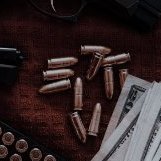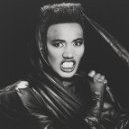Search the Community
Showing results for tags 'culture'.
-
The Culture derives from the many aspects of Los Santos' car culture, from Lowriders to Hot-Rods to Street-Tuned Cars to Shakotan and Bosozoku. Everyone with four wheels (even two wheels) are allowed to post on here as a deprived community of Los Santos. [OOC: This isn't a faction, nor is it a singular character's development. This is a community-wide open post for others to post on. As far as you're a car enthusiast and want to show out, I encourage anyone of the community to post under this.]
-
THE RANA REPORT Your source for the latest Los Santos news, investigative journalism, and city-wide updates. 'Vibe Check' for the New Year: Street Interviews BY RANA KHATI Los Santos lit up at night. A common sight for a city full of night owls. It's been 21 days since the New Year dawned on Los Santos and the city simmers in a state of quiet uncertainty. Recent events have seen the Mayor imprisoned and State officials huddling to figure out the next steps, but have these events changed life for the average citizen of Los Santos? The Rana Report took to the streets and interviewed every-day Los Santans to find out just that. We asked them about what life is like for them these days, what struggles they and their neighbors are dealing with, and what their favorite parts of the city are for relaxing and re-centering their mind. Noelle, 23 Legion Square Noelle told the Rana Report she had been in Los Santos for about one week and already managed to find two part-time jobs in Bartending and Reception, but noted how difficult it was to find even basic temporary housing. She's currently forced to sleep in a hotel room and already has had her car stolen by Los Santos' notorious car-thieves. Her favorite part of Los Santos is the Vinewood Hills. Legion Square, Mission Row, LS. Jordan, 27 Alta Jordan has been living in Los Santos for a little over one month and has been supporting himself as an independent taxi driver. His biggest struggles are turning a profit in a city whose criminal elements seem to target taxi drivers on a regular basis. He told Rana: "I got robbed twice of nearly all my money, I work, I earn, then I get robbed of all what I earned, can you believe it?" He enthusiastically shared that his favorite part of living in Los Santos was and will always be the beautiful women he has the honor of driving on a regular basis. Jordan and his taxi in Alta Val, "in her 20s" Conroy's Gym, Textile City The Rana Report saw Val going toe to toe with a man in when fighting in the cage over at Conroy's. Val moved here two months ago from Liberty City and so far, one of her favorite hobbies is sparring, she shared that she loves the rush it brings and that it can make anyone stand tall and keep going. Val sparring at Conroy's in Textile City Madeleine, 24 Mission Row Madeleine has been living in Los Santos for eleven years and told Rana that the biggest issue she's seen remain unresolved is the crime epidemic that has swept the city for years. A self-described "Goth", Madeleine enjoys relaxing in solitude, taking luxurious trips to the local cemetary, and cutting loose at the local goth club, The Crypt when she's not working at her day job. Madeleine attending to customers in Mission Row "Trigger", 18 Davis We found Trigger hanging out with some friends on the sidewalk. He's been living in Los Santos every year of his eighteen year old life and he told Rana that the biggest problem they were facing in Davis was over policing and what he described as "Snoovers." We suspect this might be a set of neighborhood rivals. Davis, Los Santos Stu & Chu, 24 & 23 Little Seoul Stu & Chu, two residents of Little Seoul, told Rana that one of the biggest obstacles their facing is a lack of community engagement especially in their Little Seoul Running Club and the speedy car racers that rush down the streets at dangerous speeds. Chu told Rana that speed bumps would help Little Seoul out with that last problem. Both men said they enjoyed going to neighborhood staples like Wook's Tea House or Mr. Liu's Pool House after a long day. Stu in front of an apartment building in Little Seoul Shane, 27 Blaine County Rana found Shane waiting for a speedy and efficient car modification over at Route 68 Garage in Blaine County. Shane's only been in Los Santos for two weeks but he's already got a plan to join either the Police or Sheriff's Department. While he hasn't been able to find housing in Blaine, he's currently staying in the city but comes out to Blaine frequently. He's leaning towards joining up with the Sheriff's Department because he grew up around deputies and to cut loose there's nothing he likes more than hanging out with friends around town. Shane at Route 68 Garage in Blaine County The future of Los Santos lies in the hands of everyday folks like these and addressing their needs is crucial to making 2021 a year of not just peace but a year of prosperity for all. If the city and state government can make meaningful changes to address the housing and crime issues while also factoring the way policing is done in different neighborhoods, citizens from every corner of Los Santos might be able to enjoy themselves even more in our unique and diverse metropolis. A peaceful sunset over Paleto Bay Remember to like and subscribe for more city-wide news! Thank you for supporting independent journalism > Comments are enabled
-
Known as ‘female impersonators,’ drag queens vary from homosexual cisgender men, to transgender individuals, to biological women and varying description of the meaning being a ‘drag queen’; an entertainer, female impersonator or a misconstrued narrative for the LGBT+ community? Varying between sexual orientations and gender identities, the colourful individuals claiming themselves as ‘drag queens’ are often seen performing in bars or entertaining to establish further attributes of the characterisation of one’s character. RuPaul, the creator and narrator behind ‘RuPaul’s Drag Race,’ is arguably the main reason for the outburst of garnering attention to modern-aged drag events and personalities. The show’s presence has brought visibility to the art form of drag, however, the show’s theme of broadening gender identity and expression has been contradicted by the comments RuPaul Charles himself has stated. RuPaul, identified as creating positive reinforcing shifts in mainstream media, has commented such statements during an interview targeted to potential transgender women being contestants; “Probably not. You can identify as a woman and say you’re transitioning, but it changes once you start changing your body. It takes on a different thing; it changes the whole concept of what we’re doing.” Despite the avoidance of previous transgender contestants and sub-sections of varying queens, RuPaul’s actions were concluded with a subtle apology in return. As stated prior, the drag community varies, between alternative styles to presence; meaning, RuPaul, although arguably the most known ‘drag queen,’ is unable to speak on behalf of a community that is individualistic and that advances the primary question further; how does one describe a ‘Drag Queen’? The art form of drag originated from Shakespearean times and for more so utilitarian purposes, originating in the seventeenth century during Shakespeare’s plays, in which solely men could partake in production due to the religious rites. Men would dress as women, to fill the void of lack of female presentation and to depict drag in its earliest form; with the word ‘drag’ being created from how the drag queens’ dresses would drag across the floor throughout the performance. Drag, however, began to become individualistic and modernised through the introduction of ‘vaudeville’ into American culture and audiences. Shakespeare's 'As You Like It' features a cross-dressing character, Rosalind, when she disguises herself as a persona named Ganymede. Vaudeville performances gained traction in the early twentieth century as performance acts, with combinations of comedy, musicality, and other genres to create its own alternative form of live entertainment for the masses. Female impersonation became intertwined with vaudeville performance, with female impersonation subtly becoming ingrained into gay culture throughout time, specifically during the United States’ Prohibition era, which abolished alcohol production and consumption from 1920 until 1933. During these periods, gay men, specifically, used underground clubs and speakeasies to express their identities and as an opportunity of entertainment. 'The Rocky Twins,' a duo that consisted presumably during the Vaudeville era. The popularisation of drag during the Prohibition era became known as ‘the Pansy Craze,’ which explored the ideals of sexuality, gender and thought process in such a strict-minded era. The Pansy Craze was prominently popular in underground environments, such as; New York, Los Angeles and San Francisco. From the midst of underground culture, gay culture continuously was policed in non-underground environments; meaning, gay individuals were not permitted to dance with each other, or to even be served alcohol in bars. New York’s Mafia and the Genovese family offered an outlet for the LGBT community and drag queens in particular; a safe environment of self-expression during repression of one’s entertainment. A member of the Genovese crime family purchased the Stonewall in Manhattan’s Greenwich Village, in which created an outlet for gay individuals in the area and ignited the series of riots in 1969, resulting in adaptation of such environment and the gay community gaining authority against oppression. Organisations, although treated in a marginalised manner, began to blossom during the time period. A drag queen known as ‘Flawless Sabrina,’ instigated pageants across the United States, similar to traditional beauty pageants. Sabrina’s involvement and influence during the period affected drag competitions and culture for decades to appear, and plausibly could be considered the reason for modernised popularity of drag queens. Another genre of drag known as ‘drag ball culture,’ has been theorised to originate during the early 1970s, in areas such as uptown Manhattan. The influence of such actions led to gender-bending performance, such as; Tim Curry in Rock Horror Picture Show, David Bowie’s stylistic choices, Pete Burns and Boy George. 'The Queen,' circa 1968. A pageant show started by Flawless Sabrina and is considered to be one of the first appearing Drag Queen pageant shows. An undeniable force of a drag queen in the modernisation of drag, however, is RuPaul. His local celebrity image fostered in New York’s City club scene, achieving the budding artist success from their single from 1993 named “Supermodel (You Better Work).” This led RuPaul the possibilities of becoming a spokesperson for MAC Cosmetics and multiple television shows, later conducting the opportunity of the reality competition series RuPaul’s Drag Race. Alternative drag shows, such as; Dragula, RuPaul’s Drag Race Thailand and UK and other mediums have evolved in the modern era from both RuPaul’s achievements and from drag queens from earlier adaptations of the definition of ‘drag.’ RuPaul's hit-single 'Supermodel (You Better Work)'. Beyond gaining visibility in culture, specifically mainstream media, drag queens have partaken in scientific research in the psychology of drag performers. A recent research is from Moncrieff & Lienard in 2017, which evolutionary psychology is posed to both drag queens and gay men. The primary question of the investigation process is, what possibly could drive individuals to the lifestyle that is known as drag? The inquiry was questioned in an evolutionary psychology formation, with ‘signalling theory’ explaining behaviours that do not deserve as an evolutionary advantage, commonly behaviours that are deemed to attract the attention of an audience. This theory relates in apposite with drag, serving as a description of behaviourism that occurs to gain status within a specific area, despite the potential costs or drawbacks from the behaviour. Moncrieff & Lienard communicate in the introduction to the theory that the gay communities in which drag was born ‘serve as a backdrop due to their exclusive and protected nature that was once necessary for the survival of these communities.’ In the study, Moncrieff & Lienard surveyed 133 gay men, alongside a control group of heterosexual men and women. The individuals partaking in the scientific research were inquired about their perceptions of drag queens, discovering that evolutionary costs were recognised as being the core cost to performing in drag across all sections of the group interviewed. A percentage of the study detailed on how the perception of individuals partaking in drag lessened the attraction from potential mates. The theory theorised that the reason for this was due to ‘overtly feminine attire and stereotypical behaviours,’ which are seen as less desirable traits among gay men. Those who perform in drag full-time are met with personal, financial and physical sacrifices from being included in the community. Furthermore, ‘signal theory’ clarifies that engaging in ‘costly behaviours’ for intentional targets implies that performers are not ‘faking’ the their drag-personified behaviours, but more so benefiting from being validated and appreciated for their efforts to entertain, whether that may or may not signal negative response. Moncrieff & Lineard’s takeaway from the study is the hypothesis that drag performers are motivated individuals, despite the potential costs, whether that may be signalling or performing to promote equality within the community. The exaggeration of behaviourism from the opposite gender can have potential costs due to it not being ‘the norm,’ however, a surge of underground or alternative drag queens are flourishing into main-stream media with the television series The Boulet Brothers’ ‘Dragula’. The show’s competition rivals RuPaul’s Drag Race; however, the contradicting themes are present and two separate agencies are beginning to formulate with the widening spectrum of performers developing in environments that are not so underground anymore. 'Dragula,' known as a rival show for RuPaul's Drag Race, which demonstrates an alternative and darker theme compared to RuPaul's easier conceptualised series. To finalise the article in a personalised manner, I want to specify on my own experience as a drag performer. As a transgender woman, who’s transitioning went from performance art to legitimacy, I began questioning my gender identity through the over saturated femininity that is ‘Drag.’ Growing up in an urban setting, especially in an orphanage, I was disallowed to have self-expression and to ‘go against the grain,’ or to go against societal norms. The costly hours of transitioning through makeup, even gluing down those prickly brows and other tedious acts left me feeling as I had for years; dysphoric. From the earliest stages of my transition, I overly feminised my conceptual views of "femininity" to fit into a narrative to ‘pass’ or to be attractive for the sole purpose of men potentially finding me ‘attractive.’ However, throughout the underground bar scene, I realised that the reason I felt exhaustion due to the fact that I’m no performer; I’m simply a woman that is discovering herself in a situation that is wrong, but yet right. The environment expressed sexuality, comfort, and self-identification; all of which I lacked but desired to express. The sisterhood of drag remains encouraging, determined and welcoming, particularly when I needed a form of escape. For that, although misunderstood by few, drag performers(and performers in their own right) remain deeply embedded in my heart. An earlier illustration of my drag persona known as 'Ms. Cummingham'.
-
- 4
-

-
- saints news
- ezra writes
-
(and 1 more)
Tagged with:




